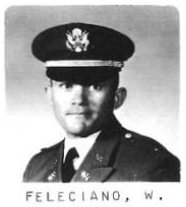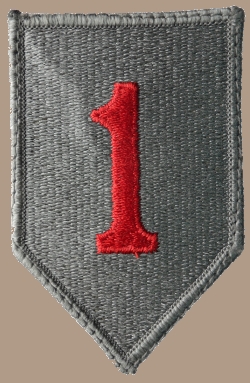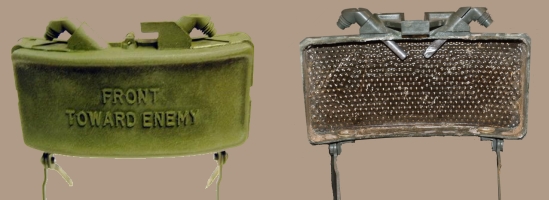 -
A Short Update, As At March of 2014 -
-
A Short Update, As At March of 2014 -

Received by eMail
From Candidate Feleciano...
 I
served in South Vietnam from July 1968 to August 1969 with the 701st Maintenance
Battalion, 1st Infantry Division as Communications Officer, Material Section.
Primary duties were responsibility of the Maintenance/Repair Oversight of all
communication devices, including electronic devices in the 1st Infantry
Division.
I
served in South Vietnam from July 1968 to August 1969 with the 701st Maintenance
Battalion, 1st Infantry Division as Communications Officer, Material Section.
Primary duties were responsibility of the Maintenance/Repair Oversight of all
communication devices, including electronic devices in the 1st Infantry
Division.
One time General Smith, ADC for Tactics, met with me and asked me to help design
and build a device that could detonate Claymore mines simultaneously. The reason
stated was that in ambushes there were numerous premature bursts being caused by
soldiers, which resulted in deadly night and day firefights.
General Smith gave me a deadline of 30 days to complete the device. I was given
the project at about 12:00 PM that particular day and was able to have the
device completed by 6:00 PM the same day.
I instructed our "Sheet Metal Shop" to construct a cover with fasteners that
would fit on the AN/PRC-25 Battery Box and to operate the device as a unit. On
the top of the cover, ten (10) M-57 firing devices (cannibalized) were installed
and wired to one connector that would be inserted in the AN/ PRC-25 Battery. Two
toggle switches were installed on the cover (operated in parallel in the event
one malfunctioned) to control the firing of the device. Also, a rubber hose
(provided as an accessory) with a small incandescent bulb positioned on one end
of the tube was used to check the firing device at night under the cover of
darkness. The tube prevented the enemy from seeing the light.
The device was camouflaged-painted and the name of “Animal” was painted on one
side of the device.
I presented the device to Colonel Earnest Deadwiler, Battalion Commander, 701st
Maintenance Battalion, 1st Infantry Division, at the 7:30 PM during the evening
briefing, and was asked why the name “Animal”.
 I
responded that “It kills without a conscience!”
I
responded that “It kills without a conscience!”
I tested the device two days later at a Base Camp, Oran. All of the 1st Infantry
Division Brigade Commanders, subordinate Commanders, and many others were
sitting in the bleachers as I made my presentation.
I was instruction by Brigadier General Smith to set the device off as I made my
presentation. Be mindful that 10 clay-mores were primed and I was thrilled to
see the effect it produced when it was fired. Many Officers jumped off their
seats. The device was eventually called a "multiple Claymore detonator".
General Smith was pleased to say the least! Eventually, 400 devices were made
for the 1st Infantry Division. I can only guess that the outcome was in our
favor.
William K. Feleciano
Major USA Retired


This page originally posted 1 March,
2014

